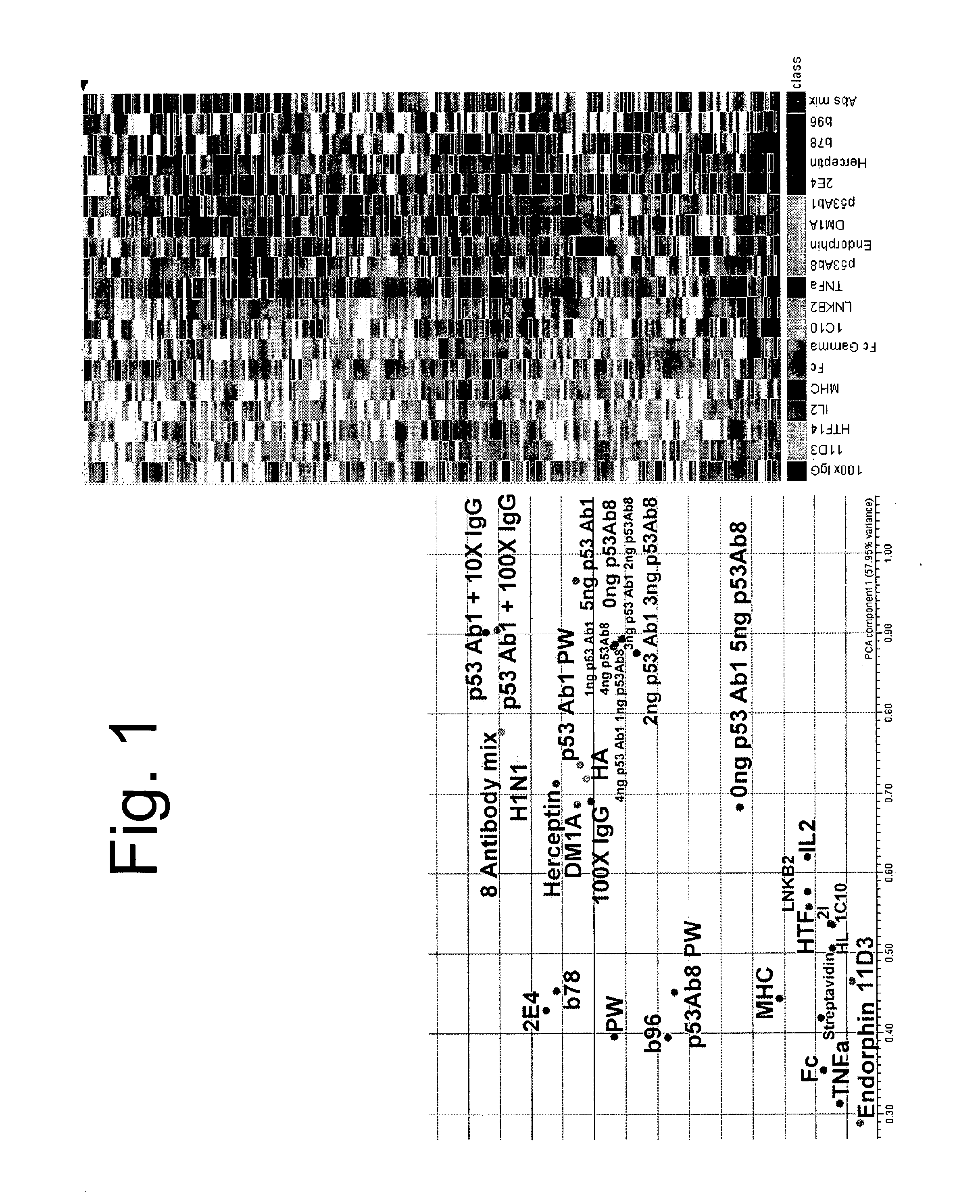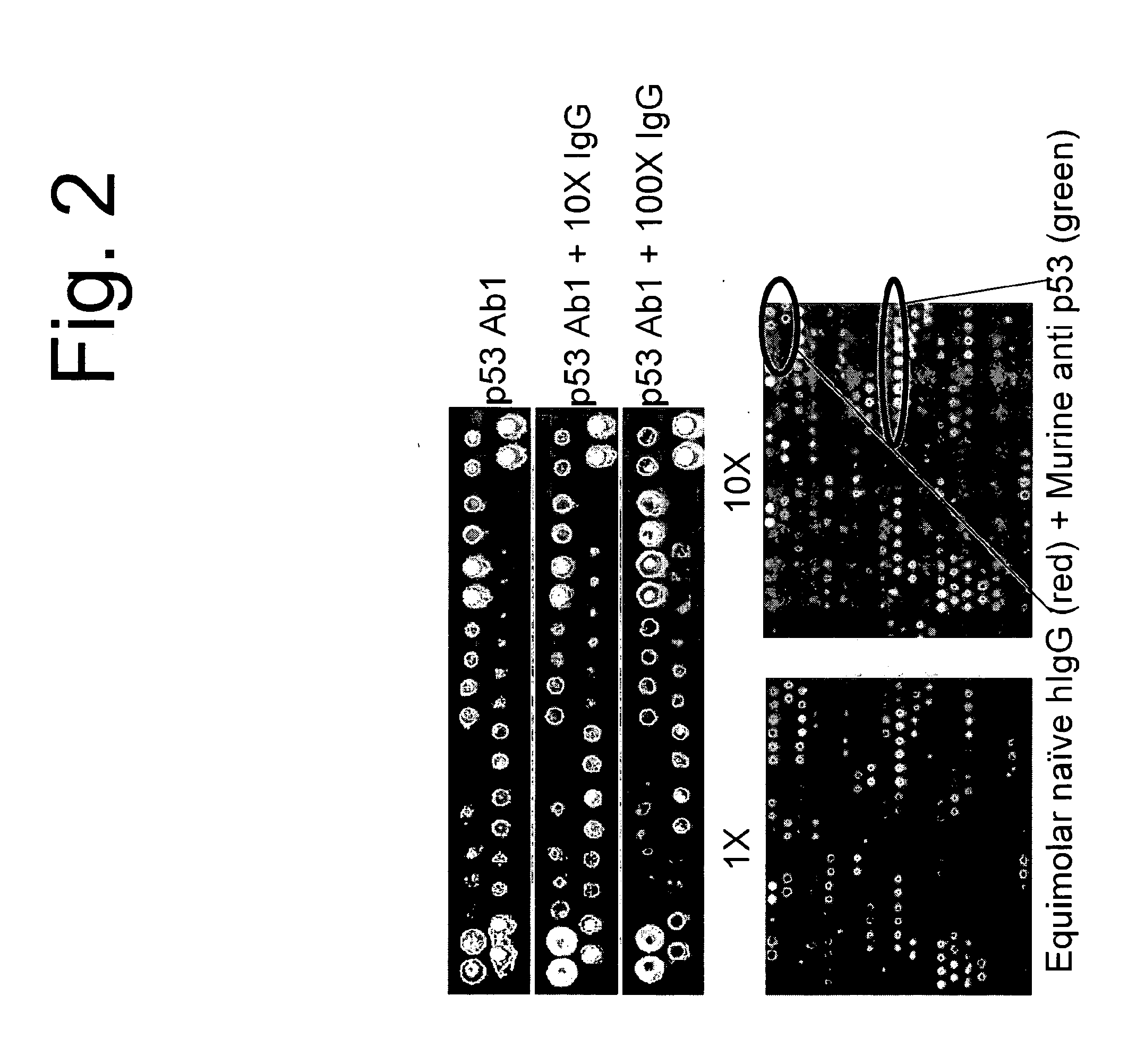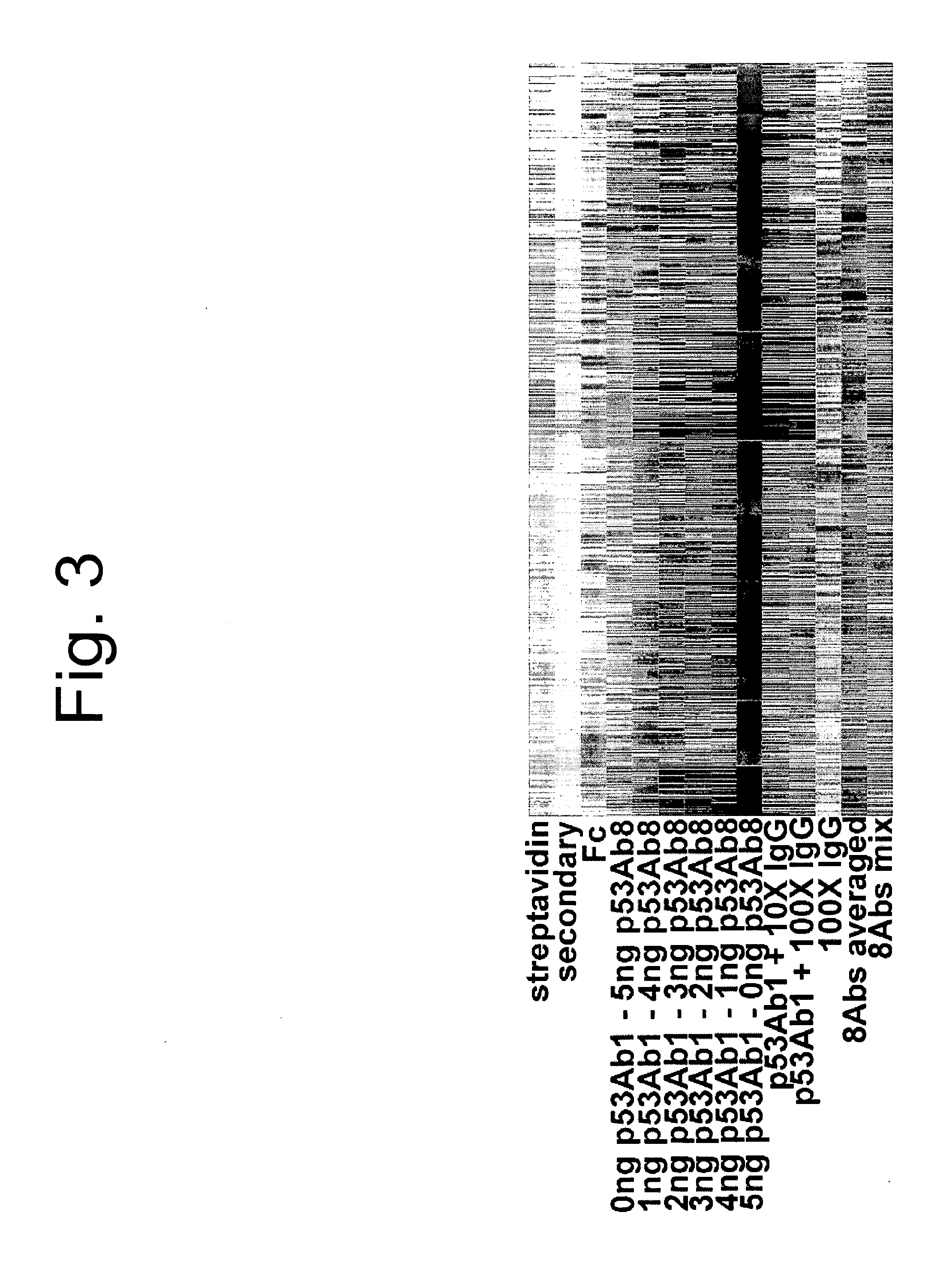Compound Arrays for Sample Profiling
a sample and compound array technology, applied in the field of sample analysis methods, can solve the problems of laborious and time-consuming processes, unfavorable standard clinical diagnostic protocols or early detection of specific analytes,
- Summary
- Abstract
- Description
- Claims
- Application Information
AI Technical Summary
Benefits of technology
Problems solved by technology
Method used
Image
Examples
example 1
Array Binding to Monoclonals
[0094]Triplicate copies of an array having 10,000 different random peptides made by robotically spotting distinct polypeptides on a glass slide having an aminosilane functionalized surface as described above were tested for binding to individual antibodies were hybridized at 100 nM, 37° C., 8 rpm, 1 hour and detected with 5 nM secondary antibody. The antibodies tested included; (1) monoclonals, (2) polyclonals, (3) unknown epitope, (4) monoclonals with linear epitopes, (5) monoclonals with discontinuous epitopes, (6) anti-Fc antibodies, (7) polyreactive antibodies, (8) autoantibodies, (9) mixed monclonals, and (10) antibodies to glycans. Triplicate arrays were mathematically averaged, and the most informative 800 peptides were used to distinguish the relative differences. The binding of each antibody or antibody mixtures to the 800 peptides can be represented by a series of colored bands as shown in the right of FIG. 1. Each band represents binding to a d...
example 2
[0097]A single monoclonal antibody, p53Ab1, was used to test the ability to discern a signature or binding profile in the presence of competing IgG. As before, 100 nM p53Ab1 was hybridized to the arrays to detect its signature. We added 1, 10, and 100-fold pooled human IgG as competitor and could still distinguish the original signal. For the 2-color experiments, IgG was detected with a red fluor, p53 with a green fluor and the competing spots were detected by multi-wavelength scanning FIG. 2 shows the signal from the most informative peptides in the different conditions tested. The signal from the monoclonal stands out against the complex background of the IgG serum. This is a key and unexpected aspect of the immunosignaturing technique. High affinity immune responses, like monoclonals mixed in serum, stand out on the arrays from the normal antibodies.
[0098]Two antibodies were selected against p53, Ab1 and Ab8. Each was titrated into the other yielding a gradient of signatu...
example 3
Resolving Disease
[0099]We collected normal donor sera and sera from patients infected with Valley Fever and Influenza vaccine recipients. Valley Fever patients were previously typed against CF antigen for titer. FIG. 4 shows the binding profiles of different patients for the most informative patients with different color bands representing different binding intensities. In general, normal undiseased patients, showed a low intensity pattern. Patients infected with cocci showed a much higher intensity pattern even when no titer of cocci could be detected. Patients inoculated with flu vaccine showed varying patterns likely corresponding to the strength of the immune response. These patterns were readily distinguishable from the normal patients and cocci infected patients.
[0100]In a further experiment, samples from about 200 cancer patients having various kinds of cancer including glioma, sarcoma and pancreatic cancer were tested. FIG. 5 shows the binding profile of the most informative...
PUM
| Property | Measurement | Unit |
|---|---|---|
| apparent dissociation constants | aaaaa | aaaaa |
| apparent dissociation constants | aaaaa | aaaaa |
| average distance | aaaaa | aaaaa |
Abstract
Description
Claims
Application Information
 Login to View More
Login to View More - R&D
- Intellectual Property
- Life Sciences
- Materials
- Tech Scout
- Unparalleled Data Quality
- Higher Quality Content
- 60% Fewer Hallucinations
Browse by: Latest US Patents, China's latest patents, Technical Efficacy Thesaurus, Application Domain, Technology Topic, Popular Technical Reports.
© 2025 PatSnap. All rights reserved.Legal|Privacy policy|Modern Slavery Act Transparency Statement|Sitemap|About US| Contact US: help@patsnap.com



